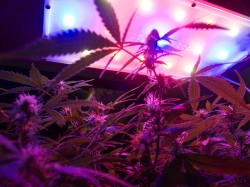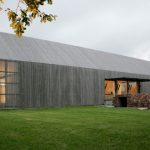For many indoor gardeners, it is important to use equipment that that is environmentally friendly. In the case of grow lights, that means using LED grow lights. Why? Because of the lower demand for power that LED lights have. They operate more efficiently than other types of grow lights, producing more useful light for the same amount of electricity when compared to conventional grow lights.
Plants don’t use the entire spectrum of natural lights that falls on them. They have evolved to require only certain, very specific parts of the spectrum. They use some of the red-orange range of available light to power photosynthesis, the process by which they produce food for themselves. They also use part of the blue-violet range for reproductive purposes such as blooming and creating seeds. Other than these, plants use little of the rest of spectrum.
Conventional grow lights produce light over a large range of the spectrum. They are unable to do otherwise, and this where LED grow lights really shine so to speak. Research and development has now brought us to the point where engineers are able to design LED lights that only emit light over very select frequencies. This is accomplished by using differing semi conducting materials. For a more complete explanation, Wikipedia has an extensive article on the subject of LED lights.
The advantage in being able to closely control the color of the light that is produced by an LED is that energy is not wasted producing unwanted light frequencies or colors. So, while an LED is using electricity to produce exactly the colors of light that a plant can make use of, it’s conventional grow light counterpart is wasting electricity producing the desirable light, plus a lot of other colors of light that are not useful for pant growth or reproduction.
Another way LED grow lights are better for plants, is that they make less heat than conventional grow lights. Conventional grow lights produce a great deal of heat in addition to the light, and they radiate it outward onto the plants. As a result of this heat, the plants dry out much faster and need extra watering to replace the water that is lost. LED grow lights on the other hand, while they do make some heat, they make less (which means that electricity is not being wasted on heat production to the same degree that it is with conventional grow lights), and it is made in the base of the LED where it is not radiated onto the plants. This means that less watering is required for plants grown under LED grow lights.
So between the light frequencies that conventional grow lights make that are not able to be used by the plants grown under them, and the heat which is waste of energy in itself, plus the drying out of the plants that it causes, you can see how wasteful conventional grow lights are when compared to the environmentally friendly LED grow lights.

















